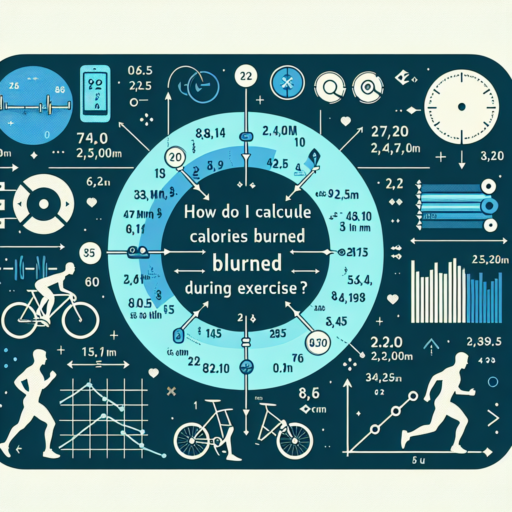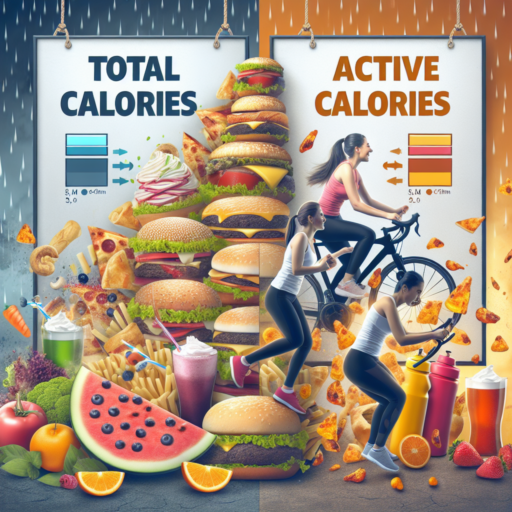No se han encontrado productos.
Understanding How to Calculate Calories Burned During Exercise
Estimating the number of calories burned during exercise involves several factors, including the type of activity, intensity, duration, and the individual’s body weight and metabolism. Calculating calorie expenditure is essential for anyone looking to manage their weight, improve fitness levels, or optimize their workout routines. Various methods and tools can help in making these calculations more accurate and tailored to specific needs.
Factors Influencing Calories Burned
The primary elements that determine calorie burn during physical activities are intensity and duration of the exercise, along with the participant’s body weight. High-intensity workouts, such as HIIT (High-Intensity Interval Training) or vigorous cycling, tend to burn more calories compared to lower intensity activities like walking or yoga. Similarly, longer exercises sessions typically result in higher calorie expenditure. Additionally, individuals with higher body mass may expend more calories doing the same activity as someone with a lighter weight, due to the increased energy required to move their body.
Calculating Calories Burned
To accurately estimate calories burned, using online calculators or fitness apps is often the most convenient method. These tools typically require inputs like age, weight, height, along with the specifics of the activity performed (e.g., type, duration, intensity) to calculate calorie expenditure. Another approach is applying the MET (Metabolic Equivalent Task) value of an exercise, which represents the energy cost of physical activities. Multiplying the MET value by weight in kilograms gives a rough estimate of calories burned per hour. However, it’s important to note that these methods provide estimates and actual calorie burn can vary.
Understanding and accurately calculating the calories burned during exercise can significantly aid in achieving various fitness and health goals. While the process can seem complex due to the numerous influencing factors, utilizing available tools and paying close attention to the specifics of each workout can provide valuable insights into one’s energy expenditure. This knowledge, in turn, can guide adjustments in both dietary intake and exercise regimens for better results.
The Science Behind Calories Burned and Exercise
Understanding the science behind calories burned and exercise is essential for anyone looking to optimize their fitness routine or weight loss journey. The process of burning calories is influenced by a multitude of factors, including the type of activity, intensity level, and individual metabolism rates.
Factors Influencing Calorie Expenditure
Different exercises burn calories at different rates. Aerobic activities such as running, cycling, and swimming are known for their high calorie-burning potential. Conversely, anaerobic exercises like weight lifting, although they might burn fewer calories during the actual activity, increase muscle mass which in turn boosts metabolism and the rate at which the body burns calories at rest. The intensity of the exercise also plays a crucial role in determining calorie expenditure. Engaging in high-intensity interval training (HIIT) can lead to more calories burned in a shorter period when compared to moderate-intensity activities.
The Role of Metabolism in Calorie Burning
An individual’s metabolism is another critical factor that determines the rate at which calories are burned during and after exercise. Metabolism varies from one person to another and is influenced by weight, age, gender, muscle mass, and genetic factors. People with a higher muscle mass have a higher basal metabolic rate (BMR), meaning they burn more calories at rest compared to those with a higher percentage of body fat.
Moreover, the concept of the «afterburn effect» or excess post-exercise oxygen consumption (EPOC) illustrates how the body continues to burn calories even after the workout is over. The afterburn effect occurs at a greater rate following high-intensity or prolonged exercise due to the increased oxygen intake required to help the body recover and return to its resting state. Thus, understanding the relationship between exercise type, intensity, and an individual’s metabolism can vastly improve how effectively calories are burned.
Different Methods to Calculate Burned Calories While Working Out
Understanding how many calories you burn during physical activities is crucial for anyone looking to maintain, lose, or gain weight. Thankfully, multiple methods exist today that can help estimate the calories burnt during workouts, each varying in complexity and accuracy. These approaches range from wearable technology to simple mathematical calculations.
Using Wearable Fitness Trackers
Wearable fitness trackers are among the most popular and convenient methods of calculating burned calories. Devices like Fitbit, Apple Watch, and Garmin use sensors to monitor heart rate, steps taken, and even the intensity of the activity. They rely on proprietary algorithms to estimate calories burned. While not 100% accurate, these devices provide a good approximation and can be a helpful tool for tracking your progress over time.
Heart Rate Monitors
Heart rate monitors, often integrated with fitness trackers or available as standalone devices, offer another approach to estimating calorie expenditure. By measuring your heart rate during exercise, these devices can provide an estimate of the intensity of your workout and the corresponding calorie burn. It’s important to ensure the heart rate monitor is properly calibrated and consider factors such as age, weight, and fitness level for more accurate readings.
Metabolic Equations for Estimating Energy Expenditure
For those who prefer a more manual approach, metabolic equations such as the Metabolic Equivalent of Task (MET) values can be used. MET values are a simple way to estimate the energy expenditure of various activities. For instance, jogging might have a MET value of 7, meaning jogging burns 7 times more calories than resting. By multiplying your weight in kilograms by the MET value of the activity and the duration in hours, you can get a rough estimate of the calories burned. Although this method requires more effort and calculations, it’s a useful alternative when wearable technology is not available.
Calculating Calories Burned: The Role of Metabolic Rate
Calculating the number of calories burned through various activities and the daily functioning of our bodies is crucial for those managing their weight or looking to improve their fitness levels. The metabolic rate plays a significant role in how efficiently our bodies can convert food into energy and, subsequently, the amount of calories we burn. Understanding metabolic rate not only helps in personalizing diet and exercise plans but also in achieving more accurate fitness goals.
What is Metabolic Rate?
Metabolic rate refers to the speed at which our bodies consume energy or burn calories. It is influenced by several factors, including age, gender, muscle mass, and physical activity level. The Basal Metabolic Rate (BMR), one of the key components of the metabolic rate, represents the number of calories required to maintain basic physiological functions at rest, such as breathing and maintaining body temperature.
How to Calculate Calories Burned
To calculate the total calories burned, it’s essential to take into account both the BMR and the calories expended through physical activity. There are various formulas and online calculators available to estimate your BMR with reasonable accuracy, which can then be adjusted based on your activity level. It’s important to note that the more active you are, the higher your metabolic rate will be, leading to more calories burned throughout the day.
Understanding the role of metabolic rate in calculating calories burned offers valuable insights into managing your health and fitness goals effectively. By taking into consideration the intricacies of how our body processes energy, individuals can tailor their diet and exercise routines to better suit their metabolic needs, making their health journey more efficient and personalized. Whether you’re looking to lose weight, maintain, or gain, recognizing the importance of metabolic rate is a crucial step in the right direction.
Use of Fitness Trackers and Apps to Estimate Calories Burned
The use of fitness trackers and apps to estimate calories burned has revolutionized the approach to fitness and weight management. These devices leverage advanced technologies to provide users with insights into their physical activities and the effectiveness of their workouts. By monitoring steps taken, heart rate, and sometimes even the body’s response to different types of activities, fitness trackers offer a scientific method to estimate the number of calories burned.
One of the main advantages of fitness trackers and apps is their ability to personalize the fitness journey. By inputting personal data such as age, height, weight, and activity level, these devices tailor the calorie estimation and fitness advice to the individual. This personalized approach not only enhances the accuracy of calorie burn estimates but also helps in setting realistic fitness goals. Additionally, many fitness apps incorporate goal-setting features, progress tracking, and motivational alerts to keep users engaged and motivated.
Furthermore, the integration of fitness trackers with mobile apps and other smart devices has made it easier for users to access their fitness data on the go. The seamless connectivity allows for a holistic view of health, combining calorie burn with other health metrics such as sleep patterns, heart rate, and even nutrition. This comprehensive approach aids individuals in making informed decisions about their health and fitness routines, encouraging a more balanced and healthy lifestyle.
How Accurate Are Online Calories Burned Calculators?
Online calories burned calculators have become a staple tool for many people looking to manage their weight or improve their fitness. These calculators purport to provide an estimation of the number of calories an individual burns during various activities, from running and biking to household chores. But just how accurate are these digital estimates?
The accuracy of online calories burned calculators largely depends on the variables they take into account. Most calculators require input such as body weight, age, gender, and the duration and intensity of the activity. However, the intricate details of an individual’s metabolism and their unique body composition are often omitted, leading to a generalized estimation that may not be entirely precise for everyone.
In the realm of scientific scrutiny, studies have shown a variance in accuracy. While some calculators come close to the actual caloric expenditure measured in controlled conditions, others can be off by a significant margin. This disparity suggests that while online calculators can serve as a helpful guide for general activity planning, they should not be relied upon for meticulous calorie management.
The Impact of Exercise Type and Intensity on Calories Burned
Understanding how the type and intensity of exercise influence the amount of calories burned is crucial for devising an effective fitness routine. This varies significantly across different activities and the effort level applied. Each form of exercise, from walking to high-intensity interval training (HIIT), mobilizes energy differently, engaging various muscle groups and cardiovascular efforts, which in turn impacts calorie expenditure.
When examining exercise type, it’s clear that activities engaging multiple large muscle groups simultaneously, such as swimming or cross-country skiing, tend to burn more calories than those involving smaller muscle groups. This is due to the increased demand for energy to fuel these larger muscles. Furthermore, aerobic exercises like cycling or running, which can be sustained over longer periods, consistently elevate heart rate and burn a significant number of calories.
Regarding exercise intensity, the concept of ‘the harder you work, the more calories you burn’ holds true. High-intensity activities, such as sprinting or HIIT workouts, can lead to a higher calorie burn in a shorter period compared to moderate-intensity activities like brisk walking. This is attributed to the afterburn effect, or excess post-exercise oxygen consumption (EPOC), where the body continues to burn calories at an elevated rate even after the exercise session has concluded.
In conclusion, the balance between exercise type and intensity plays a pivotal role in maximizing calorie expenditure. It’s all about finding the right combination that suits an individual’s fitness level and goals, ensuring not only an effective calorie burn but also a sustainable and enjoyable fitness journey.
Calculating Calories Burned: A Comparison Between Cardio and Strength Training
When embarking on a fitness journey, one of the primary metrics individuals tend to track is the number of calories burned during a workout. The comparison between cardio and strength training in this realm often leads to a multifaceted debate. Both types of exercise have their distinct advantages and impacts on an individual’s calorie-burning rate, influencing overall fitness and health outcomes.
Cardiovascular exercises, commonly known as cardio, are designed to increase the heart rate and maintain it at a raised level for an extended period. Activities such as running, cycling, swimming, or using an elliptical trainer are renowned for their efficiency in burning a significant amount of calories. This is primarily because cardio exercises tend to involve large muscle groups and can be sustained for longer durations. However, the actual caloric expenditure varies widely based on the intensity and duration of the workout, as well as an individual’s body weight and metabolism.
On the other hand, strength training or resistance training emphasizes muscle building and endurance. While it might seem that strength training burns fewer calories than cardio exercises in a direct comparison, the long-term effects paint a different picture. Strength training boosts an individual’s resting metabolic rate (RMR), meaning that more calories are burned at rest. Additionally, as muscle mass increases, the body consumes more calories throughout the day, even during sedentary activities.
The debate between the effectiveness of cardio versus strength training in burning calories is ongoing. While cardio exercises might lead to a higher immediate calorie burn, strength training contributes to continuous caloric expenditure by enhancing metabolism and increasing muscle mass. Therefore, a combined approach that incorporates elements of both cardio and strength training could provide the most comprehensive benefits in terms of caloric burn and overall health.
Practical Tips for Increasing Calorie Burn During Your Workout
When looking to maximize calorie burn, every detail of your workout counts. From the types of exercises you choose to the way you perform them, small tweaks can make a significant difference. Increasing your calorie burn not only helps with weight loss but also improves cardiovascular health and muscle endurance. Let’s explore some practical tips that can help elevate your workouts.
Integrate High-Intensity Interval Training (HIIT)
One of the most effective strategies for enhancing calorie burn is incorporating High-Intensity Interval Training into your routine. HIIT involves short bursts of intense exercise followed by brief rest periods. This method boosts your metabolism significantly more than steady-state cardio, allowing you to burn more calories in less time. A variety of exercises can be adapted to the HIIT format, making it a versatile and powerful tool for weight loss.
Increase Workout Density
Enhancing your workout’s density—completing more exercises or sets in the same amount of time—can drastically increase calorie expenditure. This approach not only raises the intensity of your workout but also keeps your heart rate elevated, leading to higher calorie burn. Implement methods like supersets, circuit training, or reducing rest intervals to make your workouts more efficient and effective.
Incorporate Compound Movements
Focusing on exercises that engage multiple muscle groups simultaneously can also amplify your calorie burn. Compound movements such as squats, deadlifts, and bench presses require more energy, thus burning more calories during your workout. Moreover, these exercises improve functional strength and ensure a balanced development of muscle groups, further increasing their efficiency for weight loss and overall fitness.
Understanding Your Body’s Signals: Adjusting Exercise for Max Calorie Burn
Your body constantly sends out signals that can help you optimize your workout routine for maximum calorie burn. Interpreting these signals correctly can make a significant difference in the effectiveness of your exercises. It’s all about learning to tune in to what your body is telling you and adjusting your workout accordingly to push the boundaries of your calorie burning potential.
One key signal is how your body feels during and after a workout. If you’re not feeling challenged or you recover very quickly, it might be time to increase the intensity of your exercise. This doesn’t necessarily mean longer sessions; rather, incorporating high-intensity interval training (HIIT) or adding weights can significantly boost your metabolic rate and, consequently, the number of calories you burn. Conversely, fatigue that lasts for days might suggest you’re pushing too hard and need to allow more recovery time or scale back the intensity.
Your heart rate is another crucial signal. Utilizing a heart rate monitor can help you stay in the ideal zone for maximizing calorie burn. For most people, this means working out at 70-85% of your maximum heart rate. Not only does staying within this range help you burn more calories during your workout, but it can also improve your cardiovascular health. Listening to these hints from your body is essential for fine-tuning your exercise routine for better results.



